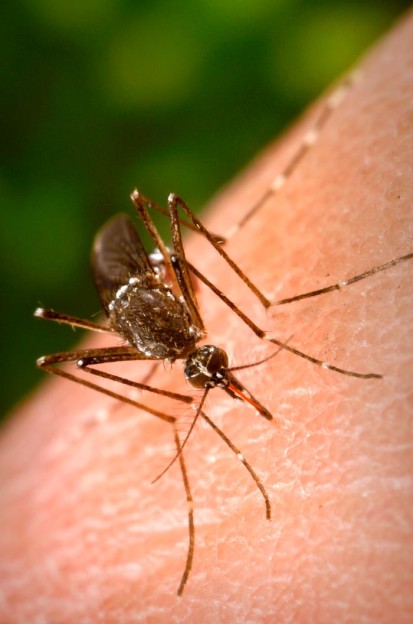The World Health Organization released the following document concerning dispelling rumors around Zika and microcephaly:
No evidence that vaccines cause microcephaly in babies

There is no evidence linking any vaccine to the increases in microcephaly cases that were observed first in French Polynesia during the 2013-2014 outbreak and more recently in northeastern Brazil. No evidence that vaccines cause microcephaly in babies
An extensive review of the literature published in 2014 found no evidence that any vaccine administered during pregnancy resulted in birth defects. The Global Advisory Committee on Vaccine Safety, which provides independent scientific advice to the World Health Organization (WHO) on vaccine safety issues, reached a similar conclusion in 2014.
In addition, national regulatory agencies are responsible for ensuring that products released for public distribution, such as vaccines, are evaluated properly and meet international standards of quality and safety. WHO assists countries in strengthening their national regulatory systems:
No evidence that pyriproxyfen insecticide causes microcephaly
A team of WHO scientists recently reviewed data on the toxicology of pyriproxyfen, one of 12 larvicides that WHO recommends to reduce mosquito populations. It found no evidence that the larvicide affects the course of pregnancy or the development of a fetus. The US Environmental Protection Agency and EU investigators reached a similar conclusion when they carried out a separate review of the product.
Larvicides are an important weapon in the public health practitioner’s arsenal. Especially in cities and towns with no piped water, people tend to store drinking water in outdoor containers. These sources of water, as well as standing water that may collect in garbage, flower pots and tyres, serve as ideal breeding grounds for mosquitoes.
Larvicides such as pyriproxyfen are often used in containers where people store water to kill the mosquito in its larval stage. When people drink water from containers that have been treated with pyriproxyfen, they are exposed to the larvicide – but in tiny amounts that do not harm their health. Moreover, 90% – 95% of any larvicide ingested is excreted into the urine within 48 hours. This product has been used since the late-1990s without being linked to microcephaly.
No evidence that the Zika outbreak and unusual increase in microcephaly cases in Brazil is linked to recent releases of genetically modified mosquitoes in Brazil
There is no evidence that Zika virus disease or microcephaly in Brazil is caused by genetically modified mosquitoes. In genetically modified mosquitoes, the genes of male mosquitoes are modified. Because of the modification, when they mate with female mosquitoes, their larval offspring cannot survive. This practice is designed to control mosquito populations.
WHO encourages affected countries and their partners to boost the use of current mosquito control interventions as the most immediate line of defence, and to judiciously test the new approaches that could be applied in future.
No evidence that sterilized male mosquitoes contribute to the spread of Zika
A technique being developed to stop Zika is the mass release of male mosquitoes that have been sterilized by low doses of radiation. When a sterile male mates, the female’s eggs do not survive. The technique has been successfully used, on a large scale, to control insect pests that threaten agriculture. There is no evidence that the technique has been associated with increases in microcephaly cases or other human anomalies or defects.
WHO encourages affected countries and their partners to boost the use of current mosquito control interventions as the most immediate line of defense, and to judiciously test the new approaches that could be applied in future.
Bacteria used to control the male mosquito population are not spreading Zika further
Bacteria such as Wolbachia bacteria are used to control mosquito populations; they do not infect humans or other mammals. Wolbachia bacteria are found in 60% of common insects, including butterflies and fruit flies. Mosquitoes carrying Wolbachia bacteria have been released in several places, including Australia, Brazil, Indonesia and Viet Nam, to help control dengue (which is transmitted by the same mosquito that transmits Zika). When females mate with males carrying the bacteria, the eggs do not hatch, thus supressing mosquito populations.
Fish can help stop Zika.
Some countries affected by Zika and dengue are using biological methods as part of an integrated approach to mosquito control. El Salvador, for example, with strong support from fishing communities, is introducing larvae-devouring fish into water storage containers.
Dr Tara Smith also did a post on the conspiracies surrounding Zika virus a couple of weeks ago on her blog, Aetiology, Check it out HERE
Related: Brazil: Microcephaly case count update, Argentine ‘larvacide link’ criticized


fish stop mosquitoes…dragonfly’s are the best!
well, there’s NO evidence of anything that is causing this spread…that means it’s government stupidity that caused this spread!!!